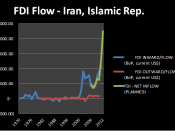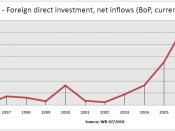Question 1: Compare and evaluate the international market entry strategies of Mars and NestlÃÂé.
Mars and NestlÃÂé both use foreign direct investment (FDI) to enter markets, however, their approach to how the FDI is used differs between the two. Even though this is the most expensive form of market entry, in terms of finance, resources and management time, it allows for the most control (Appendix 1) but also carries the most risk (Appendix 3). This means that both firms take a long-term view and create a company presence in the host market. Withdrawal from the market can be extremely costly, not only financially but also in terms of the firm's reputation in the international and domestic markets, as there are many global players.
Their multinational or nationally responsive strategies allow for differentiation advantages i.e. be more in tune with the market and be able to respond to local tastes and preferences and allow subsidiaries to have latitude to respond to local political needs, used where government plays a key role.
Even though Mars has standardised brands, standardised packaging, adaptations to the packaging still has to be made in terms of language and local content regulations. Mars with its global brands has to ensure that quality standards are met; therefore close control is needed over the process in order to ensure this is met.
Local production means that price escalation is minimised, as there are lower transportation costs, no custom duties, or other tariffs or barriers that have to be overcome. Availability of goods can be guaranteed to resellers, as production can more closely match supply and demand, so that delivery can be more reliable and timely.
Mars uses an "ÃÂentrepreneurial' approach to gain access "we don't buy and sell, we build"� - establishing the wholly owned subsidiary from...


